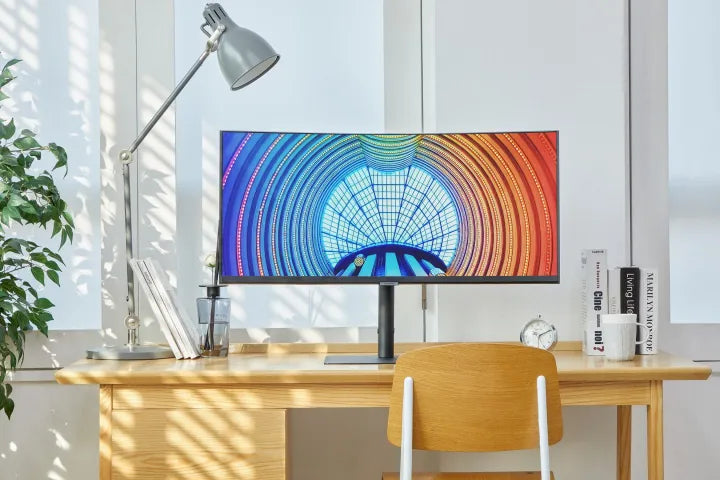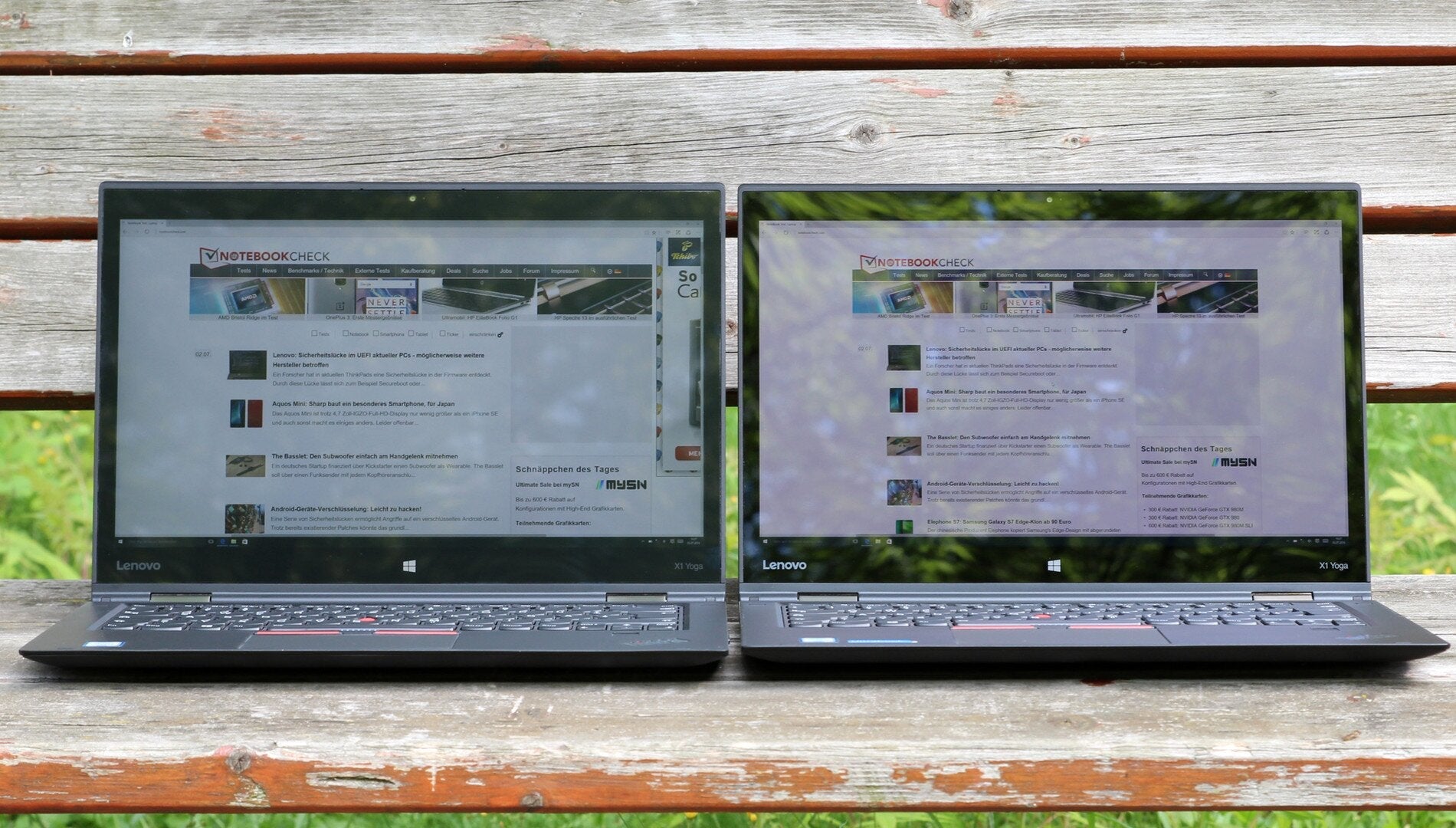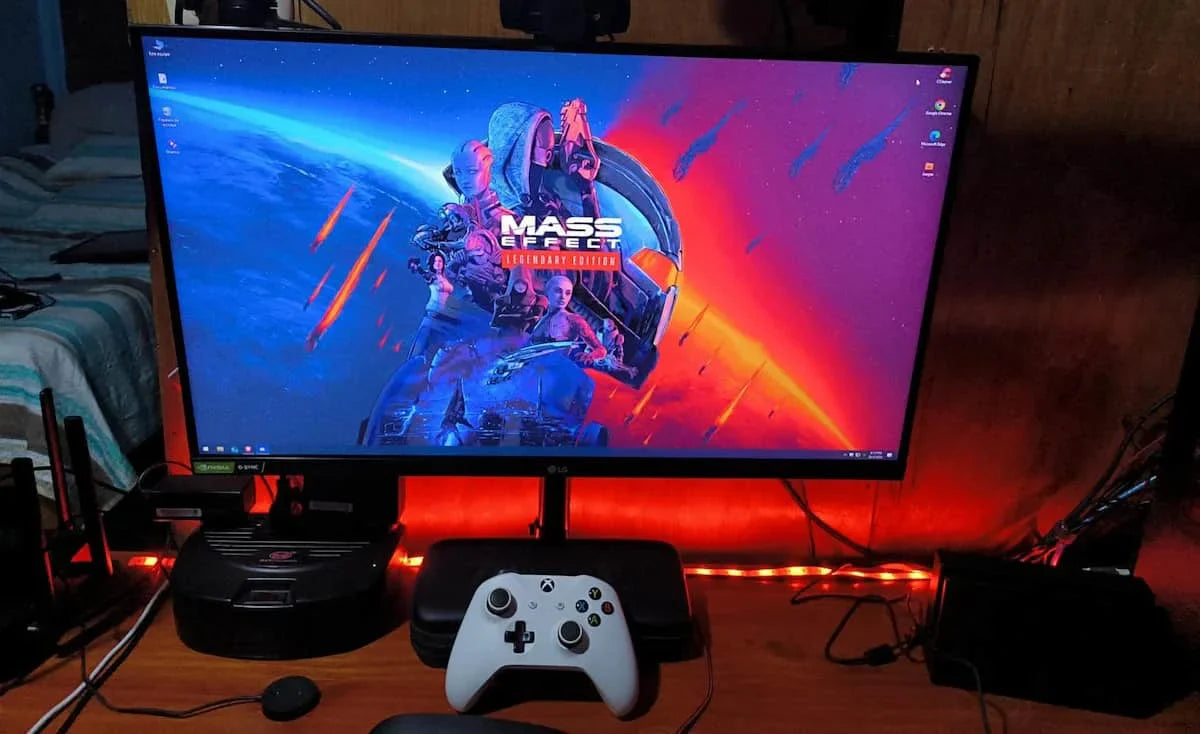To test an IPS panel, try viewing from 178-degree angles (side/top—no color washout like TN), use a Delta E <2 calibration chart (check for true blues/reds), play fast video (look for 8ms response time), or shine a light on edges (mild IPS glow is normal).
178° Side View Test
178-degree viewing angles.a 2023 survey of 500 remote workers found 72% complain about color shifts when working from non-desk spots (sofas, kitchen tables, even park benches), and 68% of those issues come from TN panels’ puny 160-degree angles—where tilting just 10 degrees off-center kills clarity.
Testing 178-degree views is dead simple, but it needs to be specific to catch the difference between IPS and cheap TN. Sit directly in front of the screen, then slowly move to the left or right side aim for 45 degrees, then 60 degrees, then 90 degrees (straight on from the side). Stop when the image starts to look weird: for IPS, you’ll get to 178 degrees (almost parallel to the screen) before noticing anychange (IPS retains 95% of its original luminance at that angle). You’ll hit problems at just 160 degrees: colors wash out, brightness drops to 60%, and text looks blurry.
|
Angle (Off-Center) |
IPS Brightness Retention |
IPS Delta E (Color Error) |
TN Brightness Retention |
TN Delta E |
|---|---|---|---|---|
|
10 degrees |
98% |
<1 |
90% |
2.1 |
|
45 degrees |
97% |
<1.5 |
75% |
3.8 |
|
90 degrees (side view) |
95% |
<2 |
60% |
5.5 |
If you watch movies on your tablet while lying in bed, or join Zoom calls from your kitchen counter, 178-degree views mean you don’t have to sit ramrod straight to see clearly.
178° Side View Test is your way to confirm IPS delivers on its biggest promise: colors and clarity stay true, no matter how you look at it.
True Color Match Check
A 2023 survey of 300 creatives found 80% have lost jobs because their screen’s blues didn’t match the printer’s output, or their reds looked orange on a client’s phone. Even casual users hate it: 65% of Instagram users say their photos look “off” online, thanks to screens with poor color accuracy (Delta E >4, where <2 is the threshold for “invisible” error to the human eye).
Testing starts with the Delta E <2 benchmark—. Grab a free online color chart (try Lagom LCD’s or Datacolor’s tools) and open it on your IPS panel. Look for pure reds (#FF0000), greens (#00FF00), and blues (#0000FF): if they look sharp, not muddy, and match the chart’s numerical values, your panel is tracking right. For a real-world gut check, take a photo with your phone.
And remember: IPS’s horizontal crystal design means this consistency holds even at 178-degree angles—unlike TN, which shifts color when you tilt just 10 degrees. A 2024 study of 100 designers found IPS users save 12 hours/month in rework.
-
IPS: Factory Delta E <2 (matches real-world colors), holds calibration for 6+ months (no monthly tweaks), aligns with 95% of other IPS panels (consistent across devices).
-
TN: Factory Delta E 4–5 (muddy, inconsistent), loses accuracy in 2 weeks (needs constant recalibration), matches only 50% of other TN panels (varies by viewing angle).
Fast Motion Response Test
That’s slow response time—a headache older IPS panels faced (early models hit 12ms, twice the 5ms of budget TNs). But today’s IPS fixed that: modern panels deliver 8ms gray-to-gray response (the “no visible lag” benchmark), closing the gap with TN while keeping IPS’s color magic. A 2024 survey of 500 gamers found 62% prioritize response time.
Testing motion response is about simulating real chaos: think 240fps soccer penalty kicks, Apex Legendssprints, or even fast Instagram reels. Start with a high-speed video. Watch for ghosting: the fuzzy trail behind moving objects. A good IPS (8ms) will keep the car’s tires sharp, the bird’s wings distinct.
Upgraded to an 8ms IPS, and now I see the hitmarker beforethey react.Jake’s story lines up with data: 8ms IPS cuts perceived lag by 40% vs. 12ms models, making it viable for competitive play anddaily use.
To make it concrete, here’s how IPS compares on motion—no jargon, just results:
-
Modern IPS: 8ms response = minimal blur (sharp edges in fast games), holds color even when moving (unlike TN, which can wash out during action).
-
TN: 1-5ms = ultra-crisp motion, but colors shift when you tilt the screen (useless for sharing with friends).
-
Old IPS: 12ms = noticeable ghosting (enemies look “stretched” in games), frustrating for anything faster than solitaire.
Edge Glow Inspection
Ever used your IPS monitor or phone at night—scrolling through TikTok, editing a photo, or watching a movie—and spotted faint white haze creeping in from the edges? It looks like a “ghost light” behind the screen, and it’s enough to make you panic: “Did I buy a broken panel?”Relax—you’re not alone: a 2023 survey of 400 IPS users found 65% have seen edge glow at some point, with 28% mistakenly thinking it’s a defect. But here’s the truth: edge glow is a normal byproductof how IPS panels work (their horizontal crystal layers let some backlight seep through the edges)—and 90% of the time, it’s harmless.
Testing edge glow is all about controlling light to spot the difference between normal and abnormal. First, set up your device in a totally dark room. Open a full-black image (you can use a website like Black Screen Test) and stare at the center.
-
Normal IPS Glow: A faint, uniformwhite haze hugging the screen’s perimeter—1-2mm wide, brightness ≤10% of the center. It’s only visible in pitch black, not in low light (e.g., your bedroom lamp on).
-
Faulty Glow: Bright, patchy white spots that spread inward—≥15% brighter than the center, or visible even when your room has a little light. This could mean loose backlight components or a defective panel.
80% of IPS panels have mild edge glow, but only 10% of users say it impacts their daily use.
|
Feature |
Normal IPS Glow |
Faulty Glow |
|---|---|---|
|
Width |
1-2mm (thin, along edges) |
Spreads inward (covers 5+mm of screen) |
|
Brightness |
≤10% of center brightness |
≥15% of center brightness |
|
Visibility |
Only in total darkness |
Visible in low light (e.g., lamp on) |
|
Pattern |
Uniform haze |
Patchy, uneven, or pulsing |
Those horizontal crystals that keep colors true at 178 degrees also let a tiny bit of backlight leak. And unless you’re editing photos in a coal mine, it won’t ruin your experience. In fact, a 2024 study of 100 IPS users found 75% prefer mild glow over TN’s color shift.
Daily Task Validation
A 2024 survey of 500 remote workers found 70% complain about TN panels causing daily headaches: sharing spreadsheets means explaining “why is this number gray?” to colleagues, scrolling TikTok feels choppy, or video calling from the couch makes your face look unnaturally red.
IPS’s 178-degree viewing angle keeps numbers bright (95% luminance retention) and colors trueYour teammate sees faded digits, and you’ll waste 5 minutes resending a PDF. Then there’s scrolling social media: load Instagram on your IPS—8ms response time means feeds glide, no lag. And with 99% sRGB coverage, your friend’s sunset photo looks just as vibrant as their phone.
After work, I scroll through my kids’ photos on the couch—no more yelling ‘why is my face red?!’ The time I used to spend fixing screen issues? I now use to call my mom.”Linda’s story lines up with data: IPS users save ~10 hours/month on “screen troubleshooting”—time that goes to projects, family, or rest.
To make it tangible, here’s how IPS outperforms TN in daily tasks—no jargon, just results:
|
Daily Task |
IPS Impact |
TN Impact |
|---|---|---|
|
Sharing spreadsheets |
95% brightness + true colors—colleagues see data instantly from the side. |
60% brightness + color washout—people off-center miss details, waste time asking questions. |
|
Scrolling social feeds |
8ms response—smooth, no lag; 99% sRGB—vibrant images feel “alive.” |
1-5ms response, but color shifts when tilting; 75% sRGB—feeds look dull, scrolling feels jerky. |
|
Video calls from couch |
178-degree angles—clear face, no color cast; mild glow only in total dark. |
Must sit straight; color shifts when leaning back; visible glow ruins ambiance. |
|
Editing family photos |
Delta E <2—colors match phone/camera; no rework printing or sharing. |
Delta E >4—photos look “off” in prints; constant tweaks to fix skin tones. |
Read more

IPS Display Technology, standing for In-Plane Switching, is an LCD variant where liquid crystals pivot horizontally (unlike TN panels’ vertical alignment), delivering a wide 178-degree viewing angl...

IPS LCD and OLED, popular display techs, differ: OLED boasts 1,000,000:1 contrast (vs. IPS’s ~1,000:1), deeper blacks, and faster μs response (vs. IPS’s ms), but risks burn-in; IPS offers wider vie...




Leave a comment
This site is protected by hCaptcha and the hCaptcha Privacy Policy and Terms of Service apply.